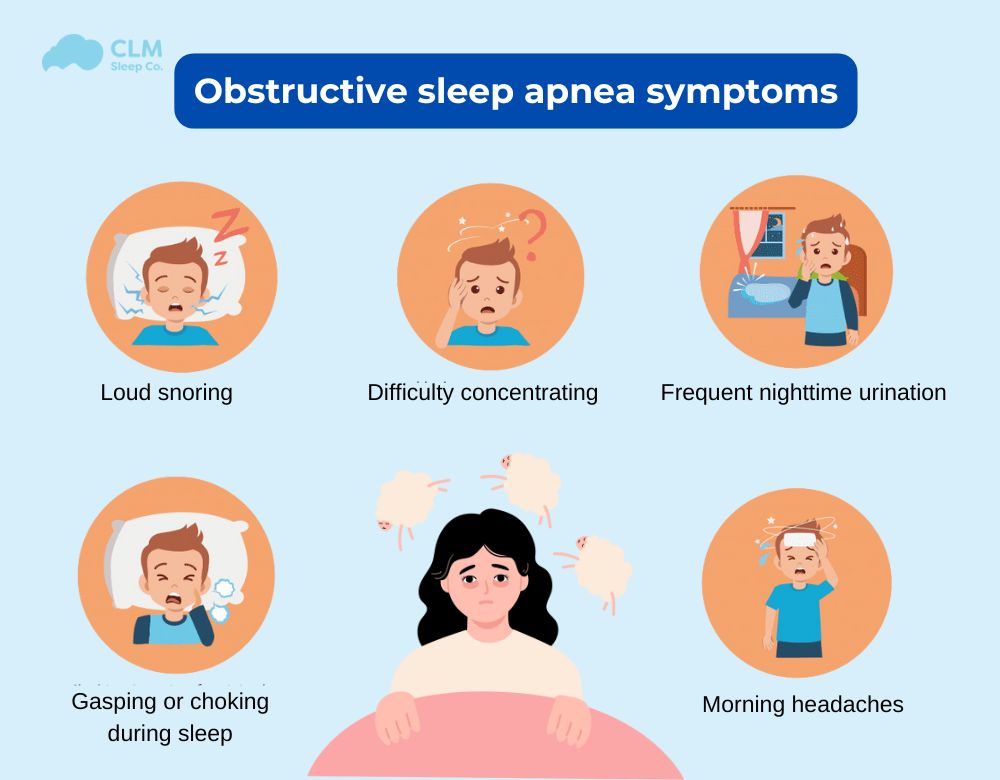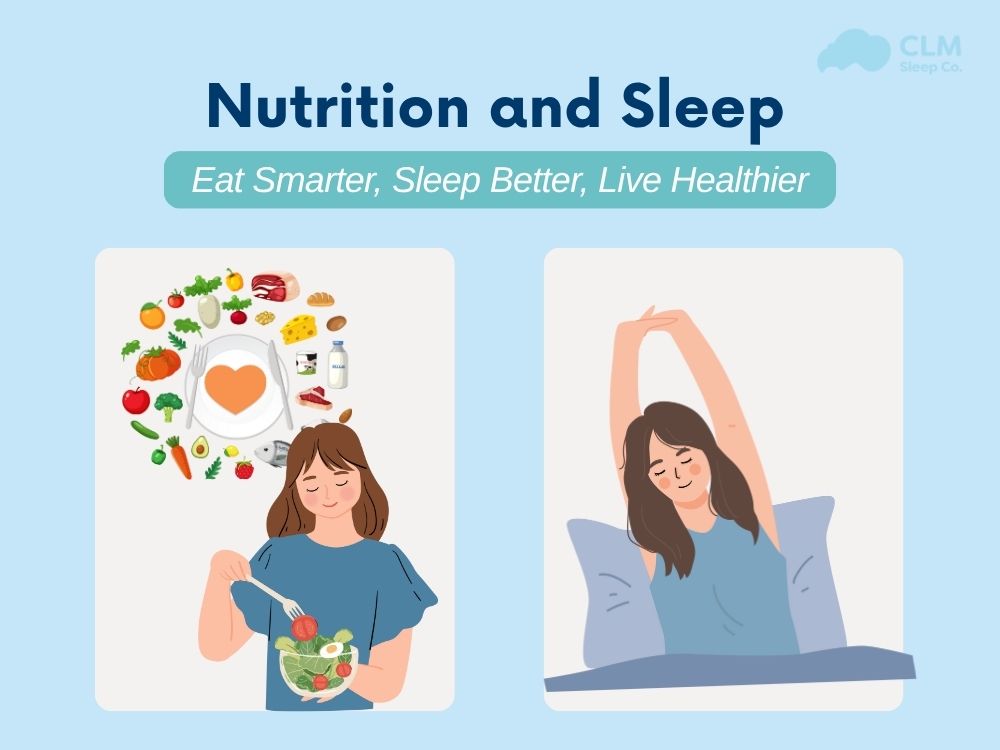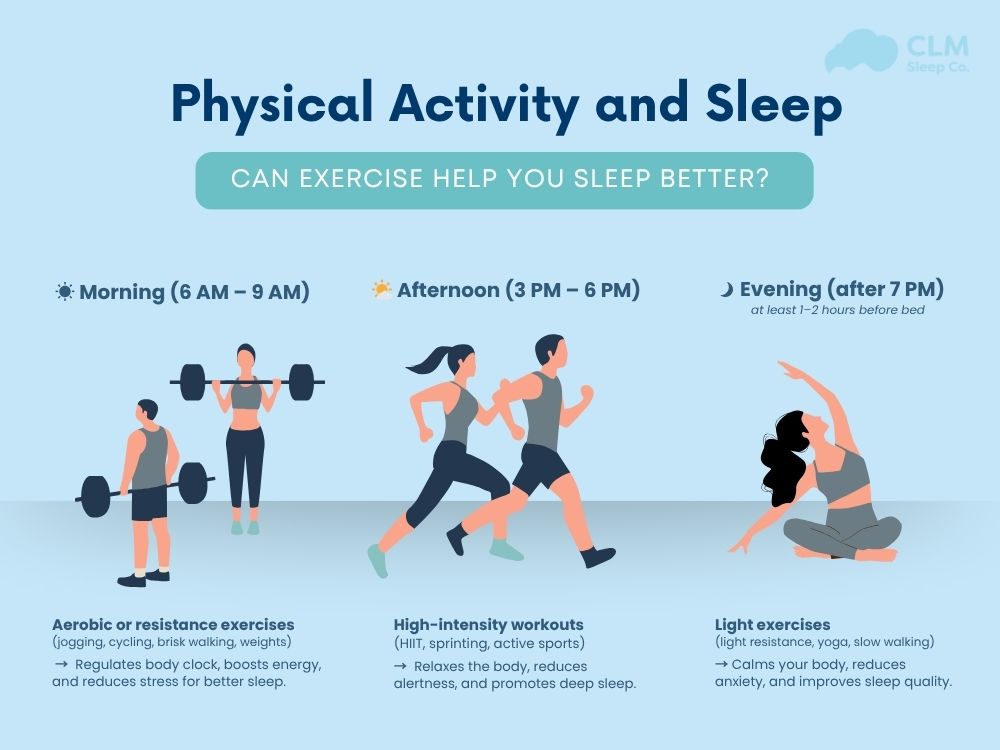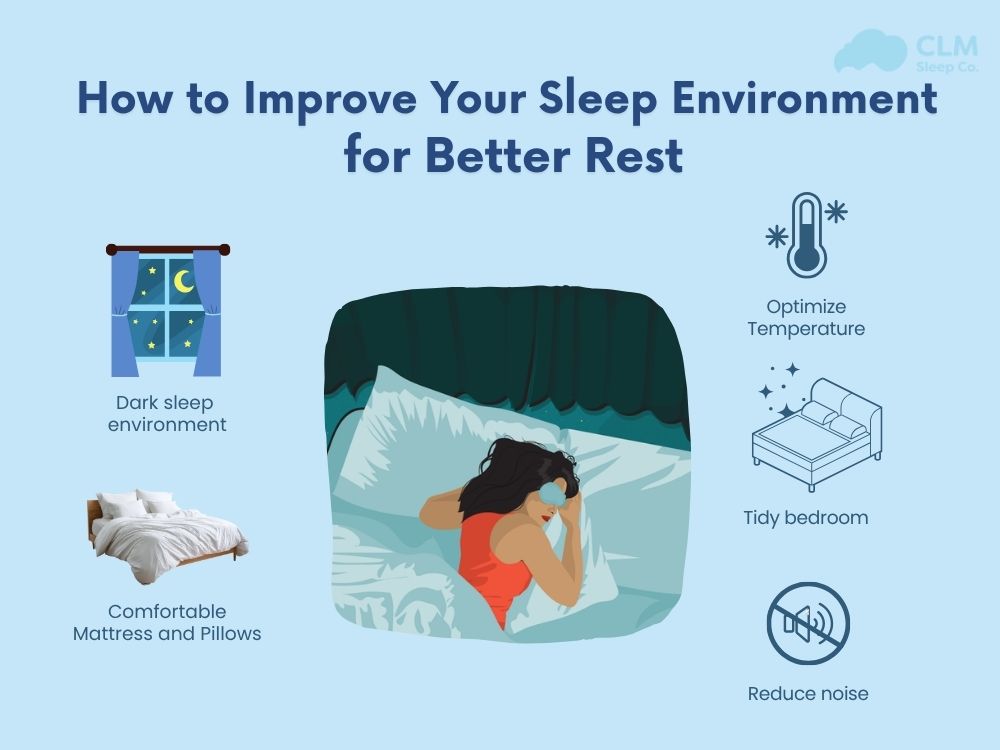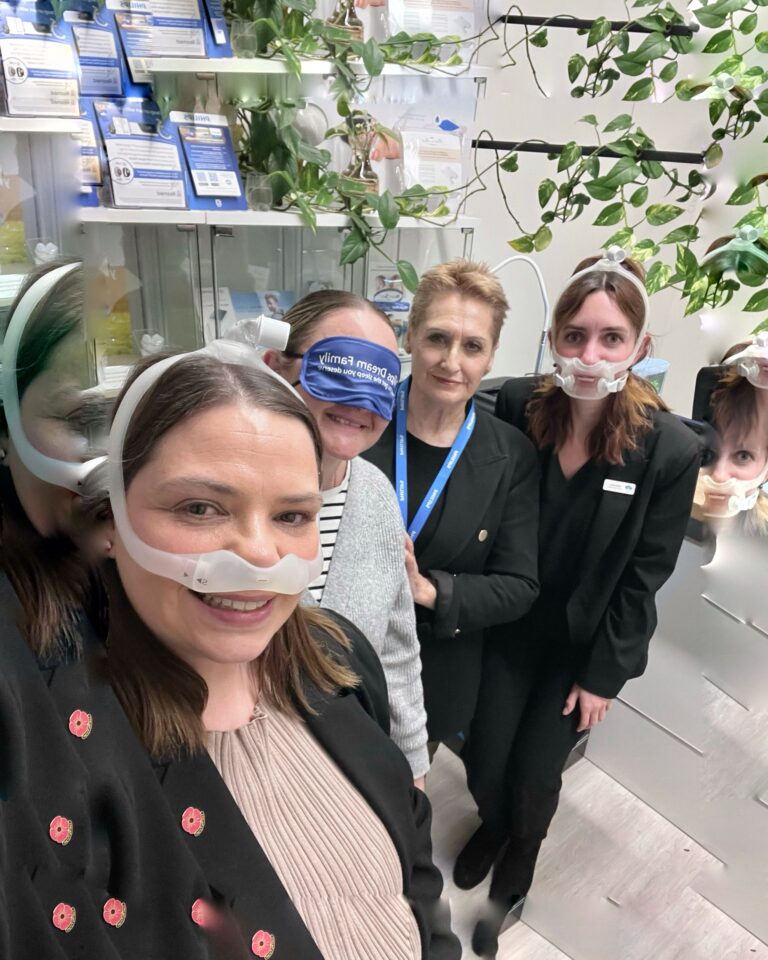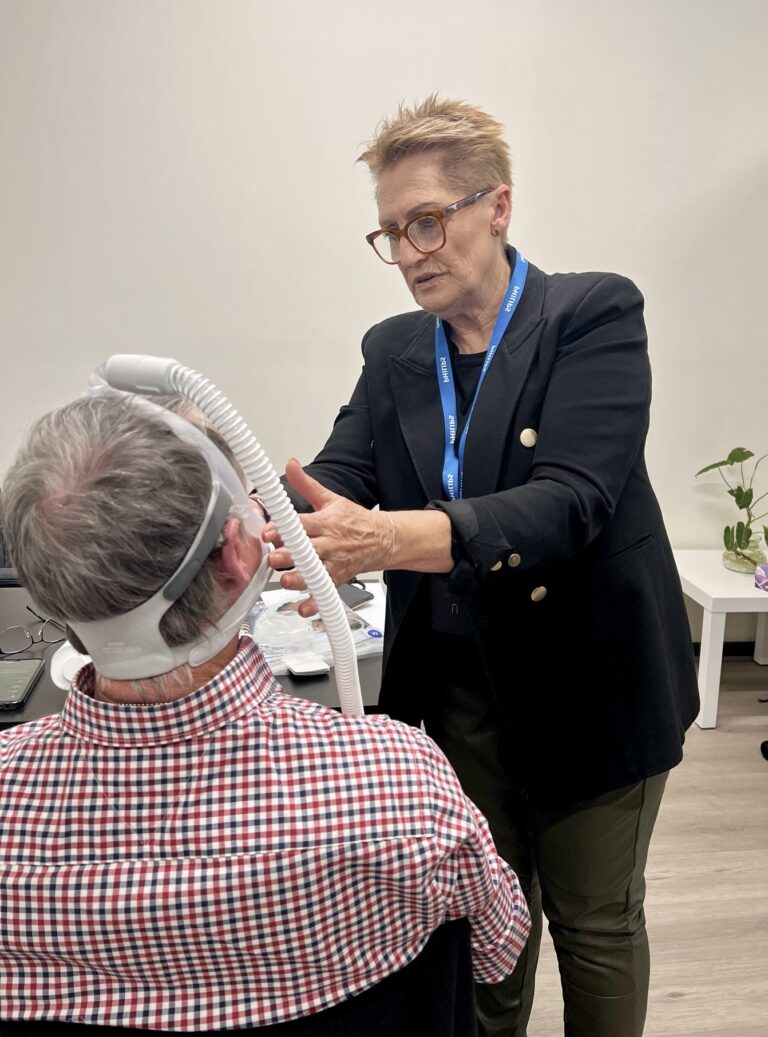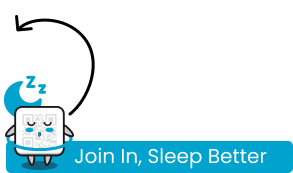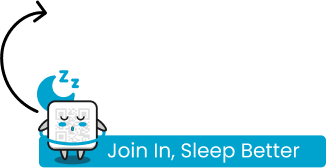Do you frequently snore loudly, wake up in the middle of the night, or feel tired even after getting enough sleep? These could be typical signs of obstructive sleep apnea (OSA). This condition occurs when the airway is obstructed, causing the patient to stop breathing for several seconds to dozens of seconds. Initially, sleep apnea only caused fatigue, lack of concentration, and daytime sleepiness. But in the long run, it can seriously affect overall health, increasing the risk of cardiovascular diseases, high blood pressure, diabetes, and more. To protect your health, you should learn more about obstructive sleep apnea symptoms in the article below.
General Symptoms of obstructive sleep apnea
Obstructive sleep apnea is the most common sleep-related breathing disorder. The symptoms of sleep apnea often become more pronounced as the disease progresses to moderate sleep apnea or severe sleep apnea. However, in reality, many patients only notice abnormalities in their sleep and daily activities but don’t think of them as signs of OSA. That’s why CLM Sleep wants to share with you some common symptoms of obstructive sleep apnea, including loud snoring, excessive daytime sleepiness, gasping or choking during sleep, morning headaches, and other symptoms.
Loud snoring
One of the most common and earliest symptoms of obstructive sleep apnea (OSA) is loud snoring. According to a study published in the journal Sleep Science in 2022, 70% to 95% of people with OSA experience snoring during sleep. Another study in Singapore also found that up to 87.5% of loud snorers were confirmed to have OSA with an AHI > 5.
Snoring occurs when the airflow through the nose and mouth is partially blocked, causing the soft tissues in the throat to shake during breathing. Snoring often becomes louder as the severity of sleep apnea increases, and this severity is often measured by the AHI. Loud snoring symptoms in people with OSA are often accompanied by pauses in breathing or gasping during sleep. Therefore, loud snoring in OSA is an important “warning sign” that needs to be diagnosed and tested early to avoid dangerous complications such as high blood pressure, cardiovascular diseases, and cerebrovascular diseases.

See more: Can You Have Sleep Apnea Without Snoring?
Excessive daytime sleepiness
A global study based on electronic databases from PubMed, Scopus, Web of Science, Embase, ScienceDirect, and the Google Scholar search engine reported the prevalence of EDS symptoms in OSA patients to be 39.9%. This symptom appears quite commonly among OSA patients, making it difficult for them to work because they often feel tired and sleepy during the day. Excessive daytime sleepiness occurs due to sleep apnea, which disrupts sleep every . They often struggle to reach restorative deep sleep and REM sleep, which affects sleep quality and the body’s ability to recover.

Gasping or choking during sleep
In sleep apnea, specifically in the obstructive type, “gasping or choking during sleep” is due to the presence of an airway block that stops breathing. The person would be observed to make gasping or jerking sounds while asleep when an obstruction at the pharynx persists and does not allow air to pass through it. If a complete obstruction had occurred, this individual would have fallen unconscious and experienced no sound but violent respiratory efforts at the time of death (from asphyxia). The body responds by waking itself up briefly to restore normal breathing; this makes the patient produce gasping or choking sounds as he struggles to breathe back again. This could disrupt sleep efficiency and render one drowsy during the day.
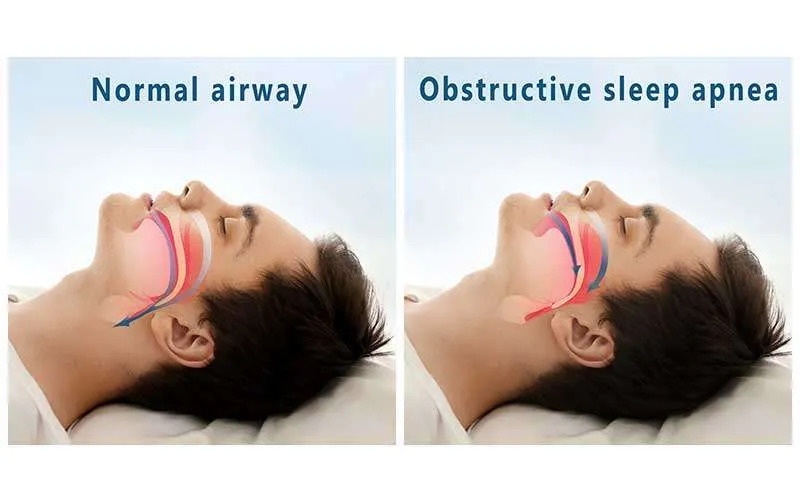
Morning headaches
Sleep apnea and headaches are closely linked. Morning headaches are a common symptom of OSA, appearing as soon as you wake up. According to research by Sleep Medicine Reviews (2024), this rate is approximately 33%, meaning that for every 3 OSA patients, 1 will experience morning headaches. The incidence of this symptom will increase to 50% for patients with severe OSA. Morning headaches occur because sleep apnea disrupts sleep and low blood oxygen levels increase pressure on blood vessels in the head. Beside morning headaches, OSA is also associated with migraine, tension-type headache, and sometimes cluster headache.
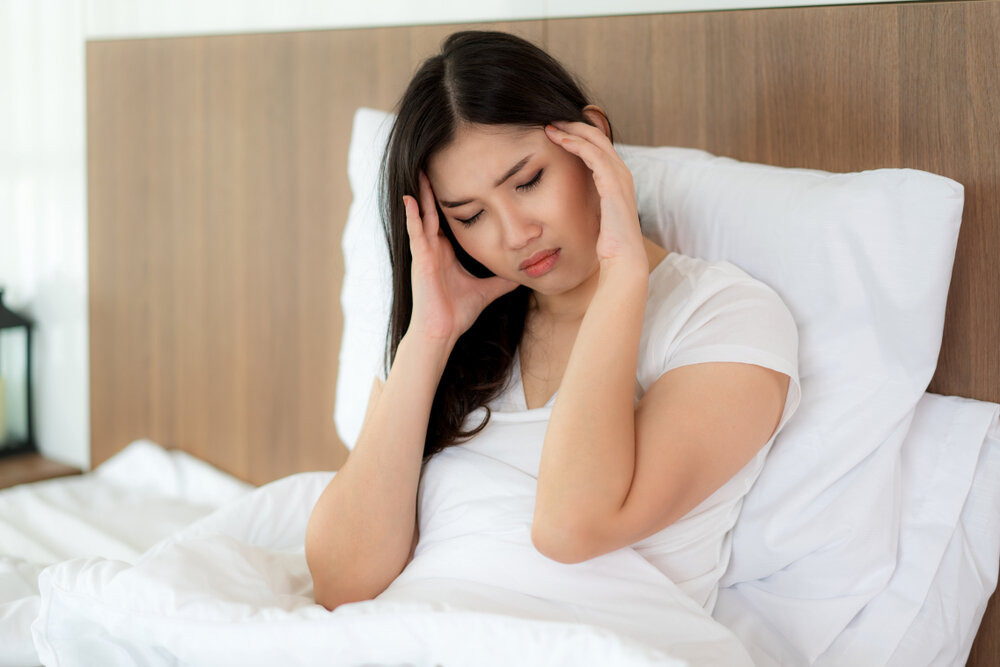
Episodes of breathing pauses during sleep noted by others
Observed in others, noted episodes of breathing pauses during sleep pertain to an onlooker’s report on the cessation of breathing by the patient with obstructive sleep apnea while he is asleep. It may be followed by a gasping or choking sound due to a momentary arousal of the person and then resuming normal respiration. This sign denotes very grave levels of airway obstruction during sleep and is pathognomonic for obstructive sleep apnea.
Read more: How to Recognize Sleep Apnea Symptoms in Women
Restless sleep
Restless sleep in obstructive sleep apnea (OSA) means tossing and turning all night long because of interruptions in breathing. As a consequence, individuals with OSA often experience fragmented sleep and difficulty staying in one restful position, leading to feelings of unrest and fatigue upon waking.
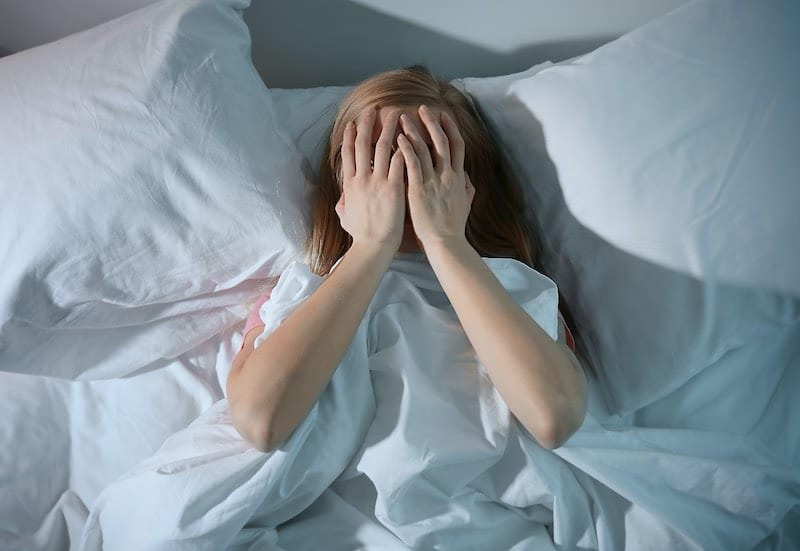
Frequent nighttime urination (nocturia)
Nocturia is the frequent urge to urinate at night, whereby an individual wakes up several times during the night to pass urine. This results from fragmented sleep and increased bladder pressure. Getting up more than once during the night to go to the bathroom breaks your sleep and aggravates daytime fatigue and drowsiness. Adequate management of OSA reduces nocturia and helps to enhance the general quality of sleep.
Night sweats and feeling restless in your sleep
Symptoms of obstructive sleep apnea can be, for instance, night sweats or feeling restless during sleep. This is because the body has responded to the lack of proper breathing with plenty of sweating during the night; it would have to struggle to rest in case there were very many awakenings. These 2 symptoms could also disturb the quality of sleep, leading as well into fatigue and discomfort during the day.
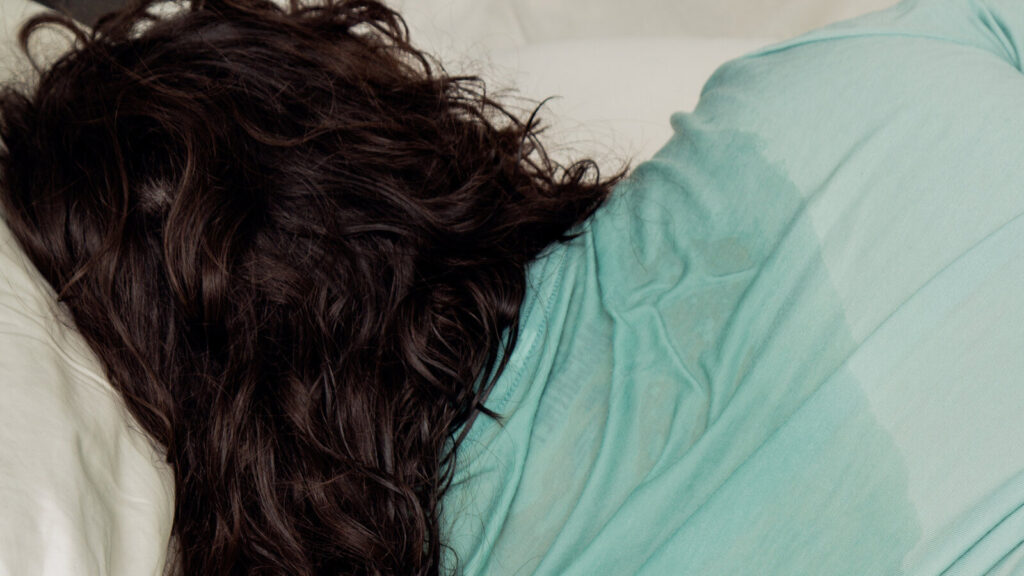
Feeling tired or even exhausted when waking up
Feeling tired or weary on awakening is because there have been frequent stoppages of breathing during sleep; thus, the system has not had the benefit of refreshing itself. Even after spending all night in bed, a person may feel unrefreshed and fatigued in the morning because of these continual disruptions. You may experience a lack of energy that never seems to go away, up to problems with memory and other cognitive complaints, and difficulties with job performance as well as quality of life.

Mood changes
In obstructive sleep apnea (OSA), mood changes refer to emotional fluctuations resulting from poor sleep quality. Individuals may experience irritability, depression, or heightened emotional sensitivity due to the constant disruptions in sleep and reduced oxygen levels. This can affect overall mood stability and lead to increased difficulty managing stress or maintaining a positive outlook on daily activities.

Difficulty concentrating
Difficulty concentrating, a symptom of obstructive sleep apnea, refers to trouble focusing or maintaining attention during daily activities. This cognitive impairment occurs because frequent nighttime awakenings disrupt restorative sleep, leading to persistent daytime fatigue. As a result, individuals may struggle with memory, decision-making, and completing tasks efficiently, affecting both personal and professional life.

High blood pressure
High blood pressure, or hypertension, is a common obstructive sleep apnea symptom. OSA leads to repeated drops in oxygen levels during sleep, causing stress on the cardiovascular system. This can result in increased blood pressure, which may persist even after the condition is treated. Managing OSA effectively is crucial to controlling high blood pressure and reducing related health risks.
Sexual dysfunction
Sexual dysfunction in obstructive sleep apnea (OSA) refers to a decrease in sexual desire or performance due to the disorder. It can result from fatigue, mood changes, and low energy levels caused by disrupted sleep. Poor sleep quality and hormonal imbalances related to OSA can also contribute to reduced libido and difficulty with sexual function. Addressing OSA can help improve overall sexual health and restore interest and performance.

Signs of sleep apnea in children
Sleep apnea in children, while less common than in adults, can still occur and presents with some distinct OSA symptoms. Here are some signs of sleep apnea in children:
- Hyperactivity or Poor School Performance: Children may exhibit signs similar to ADHD, such as difficulty focusing or trouble performing well in school.
- Loud Snoring: Persistent, loud snoring during sleep.
- Bedwetting: Frequent bedwetting or nighttime accidents.
- Restless Sleep: Frequent movements of arms or legs while sleeping.
- Unusual Sleep Positions: Sleeping in unusual positions or with their neck extended.
- Reflux or Night Sweats: Symptoms like heartburn (reflux) or excessive sweating at night.
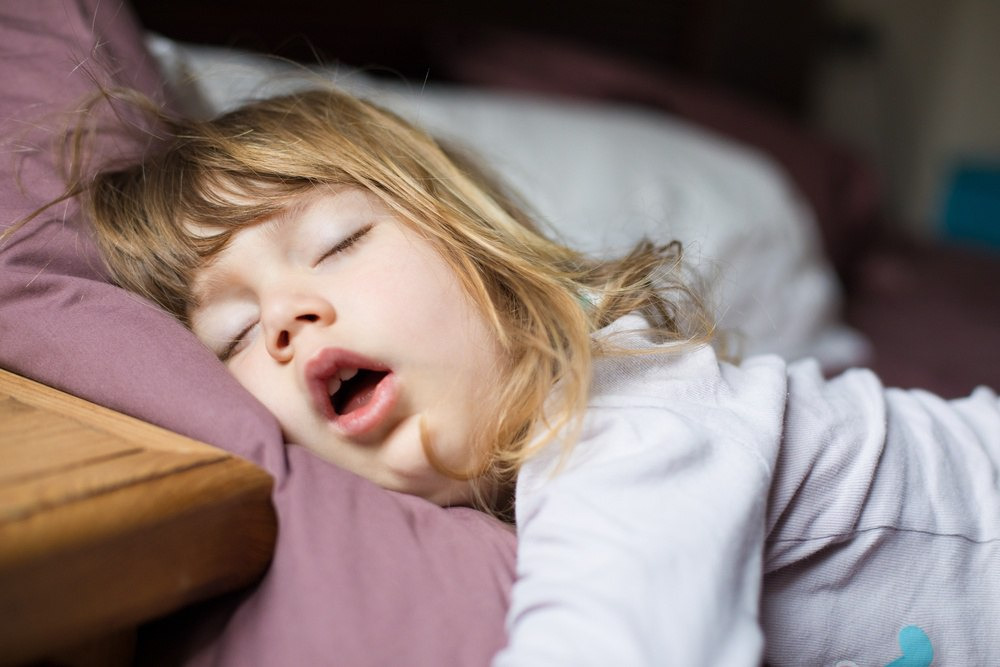
Obstructive sleep apnea symptoms in women
Women may experience different obstructive sleep apnea symptoms compared to men. Common obstructive sleep apnea symptoms in women include:
- Anxiety: Increased feelings of anxiety.
- Daytime Sleepiness: Persistent tiredness during the day.
- Depression: Symptoms of depression or mood swings.
- Headaches: Morning headaches are common.
- Insomnia: Difficulty falling or staying asleep.
- Frequent Waking: Waking up often during the night.
Women might not always have the typical symptoms such as loud snoring. If you have any of these mild obstructive sleep apnea symptoms or risk factors for sleep apnea, it’s important to consult your healthcare provider.
Differentiating between OSA and CSA symptoms and cause
Here is a table that differentiates between Central Sleep Apnea vs Obstructive Sleep Apnea symptoms and cause:
| Aspect | Obstructive Sleep Apnea (OSA) | Central Sleep Apnea (CSA) |
| Cause | Blockage or collapse of the upper airway during sleep. | Failure of the brain to send signals to the muscles that control breathing. |
| Primary Symptom | Loud snoring, with episodes of stopped breathing. | Periods of no breathing with less pronounced snoring. |
| Daytime Sleepiness | Common due to disrupted sleep. | Common due to fragmented sleep, though less frequent. |
| Morning Headaches | Frequent, especially upon waking. | Less common, but can occur. |
| Gasping or Choking | Typical when waking up during the night. | Less common; more likely to have prolonged pauses in breathing. |
| Snoring | Loud and persistent snoring is a common symptom. | Snoring is usually less prominent or absent. |
| Sleep Position | Often sleeps with the neck extended or in unusual positions. | Sleep position is less of a factor. |
| Mood Changes | Often experience mood changes like irritability or depression. | Can also experience mood changes, but less directly linked. |
| Reflux/Night Sweats | Possible, particularly if OSA is severe. This is a severe obstructive sleep apnea symptoms | Less common. |
| Childhood Symptoms | Hyperactivity, poor performance in school, bedwetting. | Similar to OSA, but symptoms may include more frequent pauses in breathing. |
Conclusion
Recognizing the obstructive sleep apnea symptoms is crucial for seeking timely intervention and improving your overall health. Common signs include loud snoring, choking or gasping during sleep, excessive daytime sleepiness, and difficulty concentrating. If you suspect you might be experiencing these symptoms, it’s essential to consult with a healthcare provider for an accurate diagnosis and appropriate treatment. You also use the CPAP machine to treat sleep apnea by providing a steady stream of air through your mouth and/or nose. This continuous airflow helps to keep your airways open, preventing interruptions in breathing during sleep.
For more detailed information on managing OSA and understanding its impact on your health, be sure to follow our website. Stay informed and take the first step towards a better night’s sleep by exploring our comprehensive resources and expert insights. In addition, you can also shop online for sleep apnea treatment devices at our store.
Reference
1. Spałka J, Kędzia K, et al. Morning Headache as an Obstructive Sleep Apnea-Related Symptom among Sleep Clinic Patients-A Cross-Section Analysis. Brain Sci. 2020 Jan 19;10(1):57. doi: 10.3390/brainsci10010057. PMID: 31963788 PMCID: PMC7016602.
2. Błaszczyk, B., & Martynowicz, H. et al. Prevalence of headaches and their relationship with obstructive sleep apnea (OSA) – Systematic review and meta-analysis. Sleep Medicine Reviews. 2024 Feb:73:101889. doi: 10.1016/j.smrv.2023.101889. PMID: 38056382.
3. Verbraecken, Johan. More than sleepiness: prevalence and relevance of nonclassical symptoms of obstructive sleep apnea. Current Opinion in Pulmonary Medicine 28(6):p 552-558, November 2022. Doi: 10.1097/MCP.0000000000000915.
4. Jui-Kun Chiang, Yen-Chang Linet et al. Correlation between snoring sounds and obstructive sleep apnea in adults: a meta-regression analysis. Sleep Science. 2022 Oct-Dec;15(4):463–470. doi: 10.5935/1984-0063.20220068. PMCID: PMC9670768 PMID: 36419807.
5. K Puvanendran 1, K L Goh. From snoring to sleep apnea in a Singapore population. Sleep Res Online. 1999;2(1):11-4. PMID: 11382877.
6. Gottlieb DJ, Ren R, Kim JH, et al. Global Prevalence of Excessive Daytime Sleepiness in Patients with Obstructive Sleep Apnea: A Systematic Review and Meta-Analysis. Indian Journal of Otolaryngology and Head & Neck Surgery. 2025 Jan;77(1):216-223. doi: 10.1007/s12070-024-05146-0. Epub 2024 Oct 29. PMID: 40066425 PMCID: PMC11890383.
